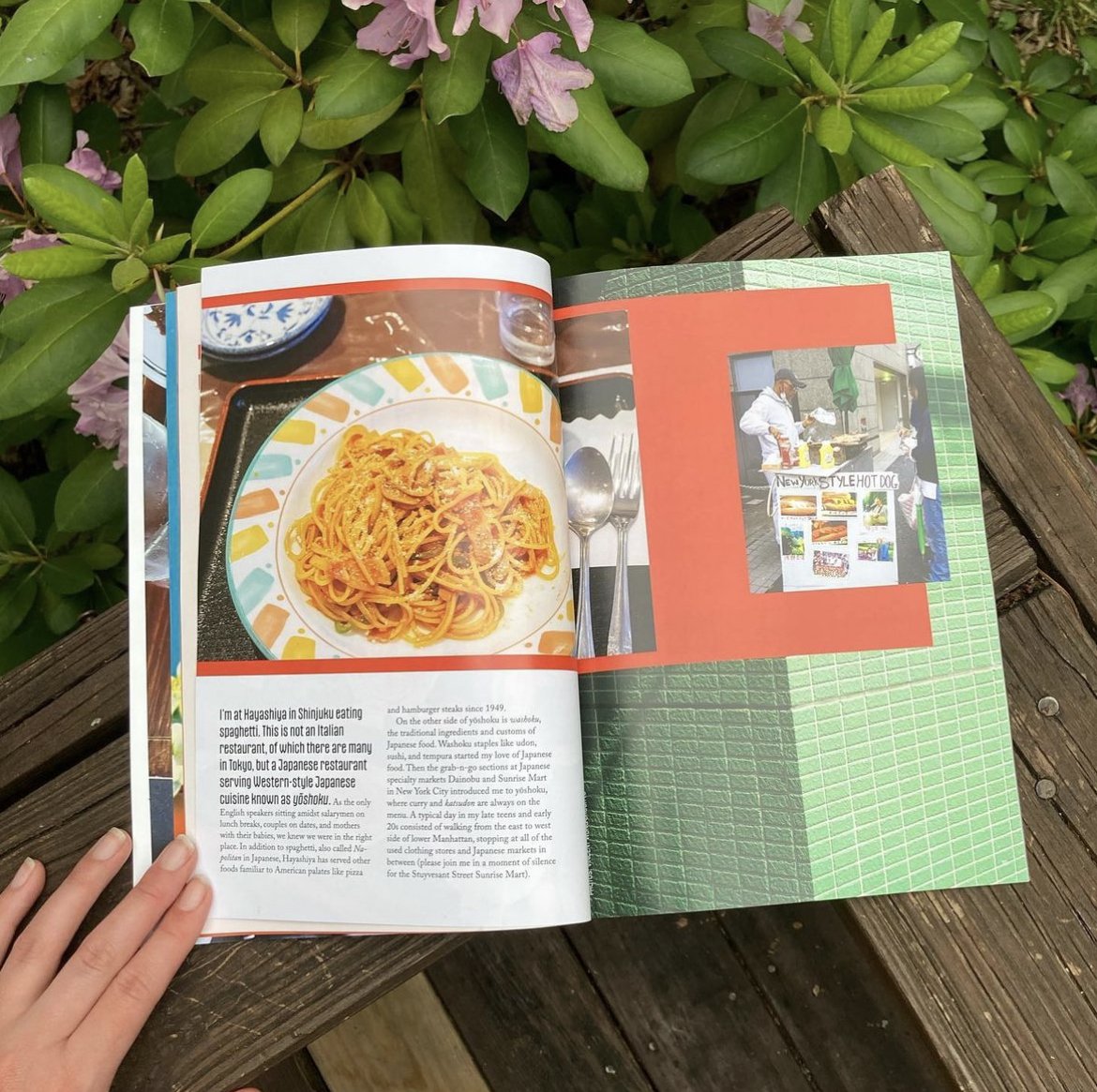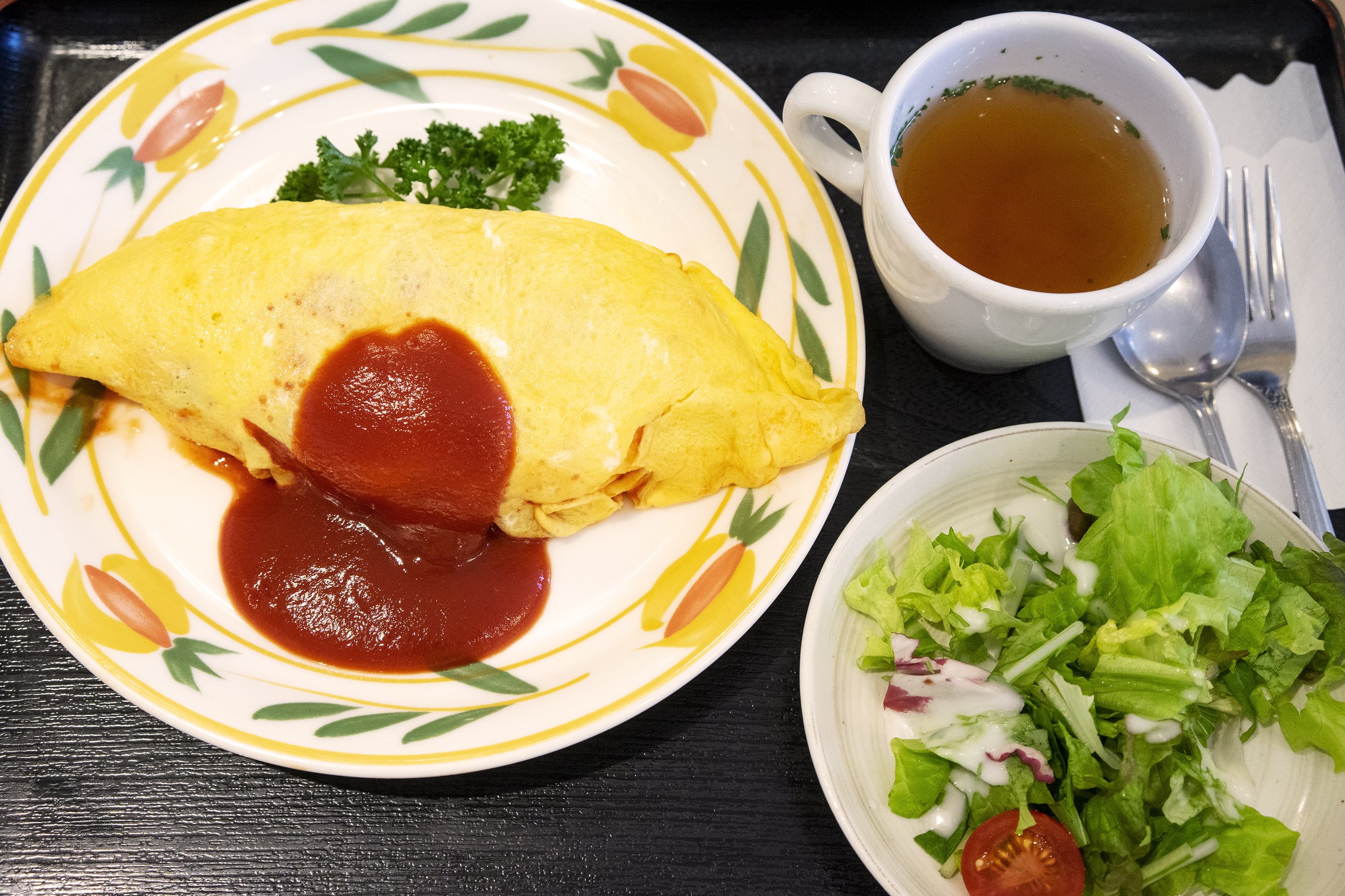Yōshoku: Finding Comfort Food 6,700 Miles From Home
I’m at Hayashiya in Shinjuku eating spaghetti. This is not an Italian restaurant, of which there are many in Tokyo, but a Japanese restaurant serving Western-style Japanese cuisine known as yōshoku (yō meaning Western, and shoku meaning food or to eat). In addition to spaghetti, also called Napolitan in Japanese, Hayashiya has served other foods familiar to American palates like pizza and hamburger steaks since 1949.
On the other side of yōshoku is washoku, the traditional ingredients and customs of Japanese food. Washoku staples like udon, sushi, and tempura started my love of Japanese food. Then the grab-n-go section at Japanese specialty markets Dainobu and Sunrise Mart in New York City introduced me to yōshoku, where curry and katsudon are always on the menu. Throughout Japan, I typically saw yōshoku as fast food, kids’ menus, and no frills restaurants where you ordered self-service and could be in and out in 10 minutes. It was uncomplicated and meant for everyone to enjoy, similar to how I experienced it in New York.
Yōshoku dates its origins to the Meiji period from 1868-1912 in Japan, which was preceded by U.S. naval officer Matthew Perry’s visit in 1853. Perry’s goal was to force Japan to join the global economy, and he was successful. During the Meiji period, trade began with Western nations, bringing new people and new food to a modernizing Japan. Limits on what could be imported and what was naturally available in Japan created yōshoku food. Cooks from the West brought their recipes and blended them with Japanese ingredients and methods. An important distinction to make is that yōshoku is Japanese food, not Japanese “versions” of Western dishes; it’s considered soul and comfort food.
I love the mixture of Eastern and Western ingredients because it was how I ate at home. My family’s main grocery store in Staten Island was Top Tomato for Italian specialties, meats, and produce. Then we had the Asian Food Market for sweets, treats, and bases. Every dish coalesced on leftovers night (Thursdays) with combinations like fried rice and chicken rollatini, or dumplings and penne. Nothing paired better with my grandmother’s chicken cutlets than Mae Ploy Thai sweet chili sauce. Globalization has its perks.
This is my first visit to Japan, and I’m with my brother and sister-in-law. Food was the main reason we were prepared to take the 13 hour flight across the world, and we came hungry. Public enemy number one on my list of yōshoku to order was doria, inspired by French gratin. The classic gratin dauphinois consists of potatoes smothered in cream sauce and topped with melted/browned cheese. A lack of potatoes led to Japanese versions of doria replacing potatoes with rice. I have never tried doria or gratin before and was thrilled to see that Hayashia near our hotel had it, and we went on our third day. Hayashiya looked like a typical American restaurant with tables and chairs, void of the counter seating I already grew accustomed to in Tokyo. We arrived in the middle of the lunch rush and after 20 minutes of salivating over the sampuru (display food) in the window, we were ready to dive in.
We ordered prawn doria, omurice (omelette rice), Napolitan, and hambagu curry (hamburger steak with curry sauce). As expected, the prawn doria was the pièce de résistance. Hayashiya used ziti instead of rice, but stayed true to the crusted cheese and cream sauce of the original gratin-inspired dish. It was rich yet light, satisfying my desire to indulge without making me feel bad about it (no offense, chicken alfredo). This was not your hometown diner’s egg special, your nonna’s spaghetti, or the new $22 burger spot downtown. Each dish packed a perfect harmony of sweet and salty, especially the Napolitan. Thin slices of pork belly balanced the sugary tomato sauce, and crunchy bell pepper pieces added texture to the al dente spaghetti. Kraft parmesan was an adequate replacement for my usual Cello brand pecorino romano. The omurice plated a French-style omelette atop a serving of chicken rice - rice cooked in a stew of chicken, tomatoes, garlic, onion, and pepper. A dollop of seasoned ketchup on top of the omelette adds another layer of flavor and texture. I didn’t sample much of my sister-in-law’s hambagu curry, but she offered me some kare korokke (curry croquette). It was crunchy on the outside, smooth on the inside, and heavy on the umami.
What I hated about Hayashiya is that we couldn’t order more. The three of us and our four dishes already took up the entire table; not to mention saving room for dinner later. This problem persisted throughout Tokyo. Walk five minutes in any direction and you’ll find at least a dozen worthy places to eat. No craving was left unsatisfied. For most of our meals, we made our picks based on the sampuru outside and were never disappointed. We bounced between yōshoku and washoku restaurants, with street food in between to fuel the daily 10 miles of walking. Just in case I never make it back to Tokyo, I took in enough for a couple of lifetimes.
A printed version of this article appears in Digest Magazine’s June 2023 issue.









